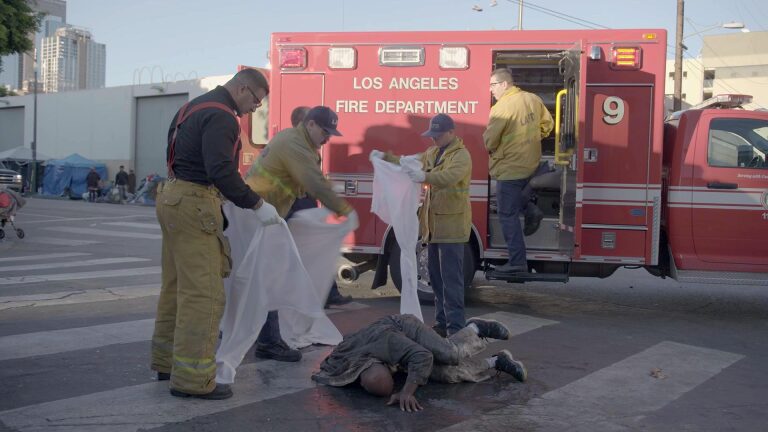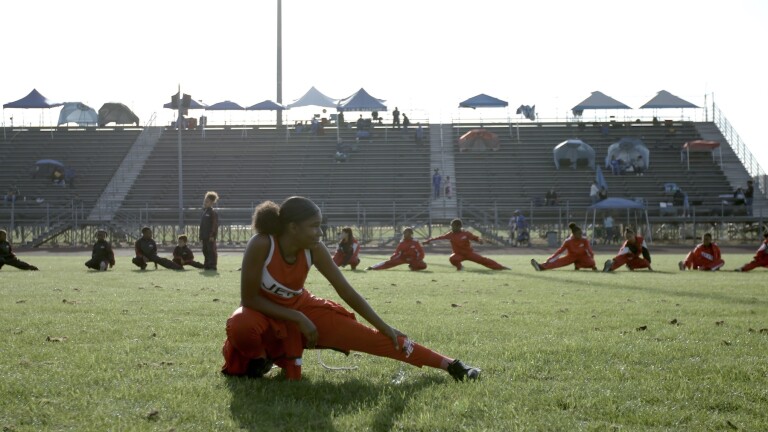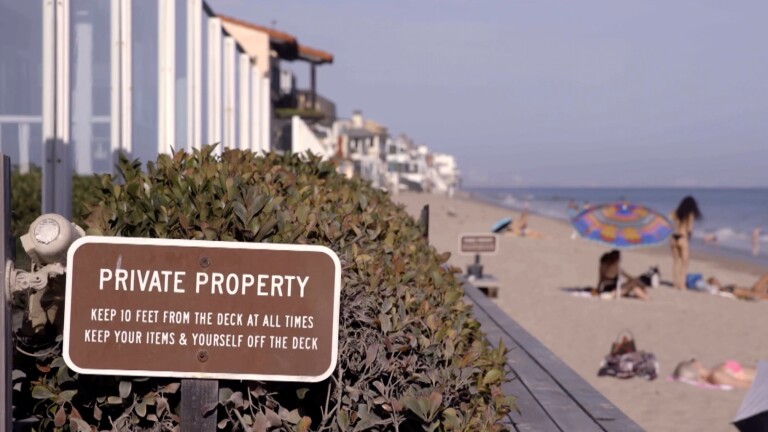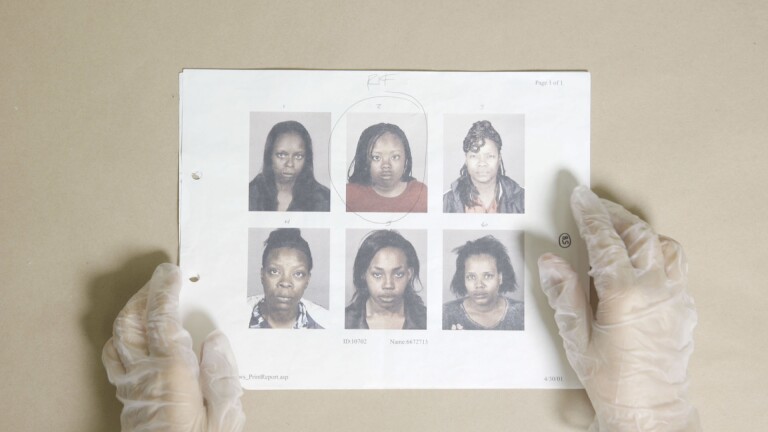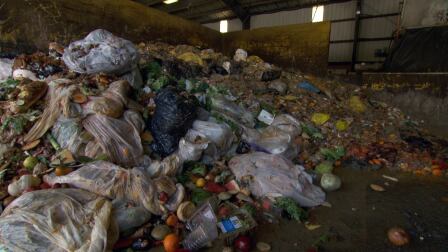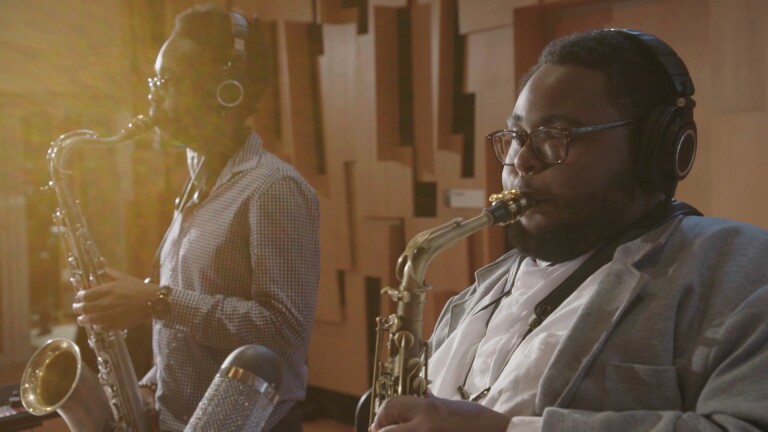
Brent Green: L.A.'s Johnny Appleseed
In this segment of SoCal Connected, reporter Nic Cha Kim profiles Brent Green, also known as LA's Johnny Appleseed. Green is helping transform the concrete-sidewalked streets of Los Angeles into tree-lined avenues one seedling at a time.
Transcript:
Nic Cha Kim: In the heart of Mid-City just north of the 10 freeway, on a quiet street... You'll find a block that's lined with beautiful trees and they're all here because of the man who lives in this house.
His name is Brent Green and when he first moved to Mid-City, the few trees on his block were sick and dying. So he planted new trees on both sides of his street. A few years later his block is the envy of his neighborhood.
NIC: So how many trees did you plant on this block?
Brent: I planted a lot of them, actually. I planted those over there... The sycamore tree. The 2 palms... All the trees leading up to this way here.
Nic: And his own house? 10 years ago, it started out like this…
Now it looks like this.
And his backyard? Went from this…
To this!
Brent: This was all dirt when I moved in.
Nic: Unbelievable! Wow!
Nic: This is like a wonderland!
Brent: I'm really glad you like it. This has become my outdoor room. I have a little 1,100 square foot. Spanish house in Mid-City and this has become the biggest room in my house.
Brent estimates he's planted 5000 trees in his lifetime. That's right, 5000 trees! So how does one man plant this many trees?
Brent: I was a little kid growing up in Leimart Park, with an afro... A little African-American kid liking plants, it wasn't the most common thing. People would see me gardening, I'd go to nurseries, people were just kinda taken by the notion I was into it. Really into it.
Nic: Brent was so into it, in fact, he didn't mind when his friends made fun of him.
Brent: I got called names, and teased, and everything, but I didn't care.
Nic: What did they call you?
Brent: Flower boy! (laughs)
Today, he's got a new nickname -- the modern day Johnny Appleseed. Now, he's a professional landscape designer and horticulturalist.
Brent: Dwarf Grapefruit tree over there, dwarf tangerine tree there, lemon tree there, and another tangerine here. We pick fruit all year.
NIC: You don't need a Whole Foods.
Brent: , I don't...
Nic: When Brent turned 35, he decided to take his plan further and that is to plant as many trees as his age. This year, he turned 48, so he's planting 48 trees around his neighborhood. He calls them his birthday trees.
Nic: Where do you plant these trees?
Brent: You know I plant my birthday trees in between the curb and the city public parkway and the goal is to line the street...
Nic: You're basically creating a canopy for the street?
Brent: That's exactly right.
Roxie: He called me. He goes, "hey, Roxie, did you want a tree?" I go, "What do you mean do I want a tree?" He goes, "I have a tree, I have 48 trees I want to plant in the area." I go, "You're kidding!" So, I go, "Of course I want a tree."
Bystander: Let me talk to my neighbors because I'm sure they need one. That would be great.
And word spread from there.
Ask any neighbors that want one that need a street tree and have the room for one...
So you've been helping spread the word?
Absolutely, I sent immediately a huge email.
But not every neighborhood has a Brent Green.
Some blocks are tree rich, while others are tree poor.
A comprehensive study found trees cover roughly 21-percent of Los Angeles, well below the national average. And the trees we do have are not spread out evenly.
Hancock park has lush, green streets. Its canopy cover is 37-percent.
But nearby Koreatown has only 7-percent.
Or, compare Hancock Park to South L.A.. The difference is just as dramatic.
Parts of the San Fernando Valley fare no better.
There are about 11-million trees in L.A. and studies show there's room for another million. Easy.
But how do you get so many trees in the ground and thriving? You start by making trees free!
Liz: So who wants to take home a tree to plant in your yard today?
Liz Skrzat heads up the non-profit city plants. They hold tree adoptions almost every weekend in areas that need them most.
"The more affluent communities in Los Angeles tend to have a much larger canopy than the less affluent communities in L.A., and so it's really important that we're able to put trees in areas that have the fewest trees."
Nic: So, how many trees are you giving away today?
Liz: 200.
Nic: Wow. What kind of trees?
LIZ: We've got, we have Crape-Myrtle, we have Sweet Shade, Drake Chinese Elm, Fruitless Olive, Native Sycamore, and the Bronze Loquat.
Nic: This family was happy to adopt a free tree...
And this woman chose a guava tree.
"Para me casa, mas bonita, mas verde... Mas colorida y welcome me familia..." (translation: "so that my house will look prettier, greener and more colorful, just like my family.")
Nic: Trees also help clean the air of cancer-causing carbon emissions... Just one of many health benefits
Liz: “...they filter asthma-causing pollution out of the air, which means less respiratory issues, they reduce our stress, which means less heart issues, and for reasons scientists can't even begin to explain, pregnant mothers who live in greener areas have healthier babies...”
Nic: There are even benefits you might not have thought of...
Brent: We actually have a senior lead police officer that's helped us with some of the crime around here. He says crime is down, I think, 35% now, and he attributes that to the tree planting.
Nic: But maybe the most important impact can't be quantified.
Liz: To us, this is about what kind of city do we want to leave our kids...we can decide not to plant trees and the canopy will decrease because trees age. And, we can hand our kids a concrete jungle. Or, we can plant now and we can hand our kids a sustainable, drought-tolerant, green oasis.
Nic: Back in Brent's neighborhood, his daughter Grace, and neighbor Roxie have planted a birthday tree. Brent hopes his daughter's generation will continue to cultivate this green movement.
Brent: I’ve just have always believed if you plant the right thing in the right place over time it becomes something really beautiful and can change the environment.
I'm Nic Cha Kim for SoCal Connected

